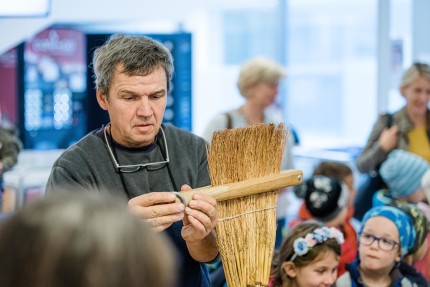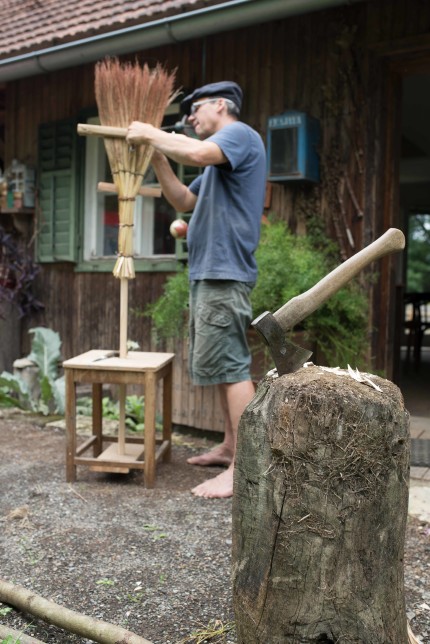BROOM MAKING

PHOTO: MANUEL FLOR
Over the centuries, brooms were produced in a completely ecological way using natural materials. It was only when the fossil fuel age began that less environmentally friendly products and chemical substances began to be used for mass production. Since then, most brooms have had plastic bristles that become porous and break with use as a result of UV radiation, and end up as tiny colourful components of organic waste. Sustainable alternatives, which are still only sporadically farmed and used in south-eastern Styria, are broom millet, summer cypress and young birch twigs. These are used to make millet brooms, cypress brooms and birch brooms, that were used for generations in gardens and courts before the introduction of plastic. Rice millet brooms can still be found in home and garden centres, but they are tied with plastic cords,
and besoms have almost died out. A few are available online or from basket makers in the autumn as decorations for Halloween. These kinds of rare natural products wear out more quickly than plastic brushes, which means it makes sense to make your own from free materials. And the fun and mindfulness you experience when you make a broom, as well as the pride you feel when you’ve made your own, should not be underestimated.

PHOTO: ERNST PREININGER
